We often come across articles about famous computers and lists that include some very beautiful ones, those that sold well, or simply ones that the author likes a lot. Today, I want to present a list of those I consider most important from a technical innovation standpoint, the ones that truly advanced the industry with new features that set them apart from the rest.
It’s also true that a commercial success can lead to significant advancements, dragging others along, or simply have the merit of bringing them to the masses. Let’s take a look.
ENIAC
We start at the beginning, almost literally. Completed in 1945, the Electronic Numerical Integrator and Computer, as it was formally known, is often cited as the first electronic, digital, programmable, and general-purpose computer in history. 1https://web.archive.org/web/20120308160220/https://www.phy.ornl.gov/csep/ov/node10.html Perhaps the most interesting feature is that it was a Turing Complete machine, meaning it could behave like a theoretical Turing machine. Although this is a rather abstract concept, it serves as a “certificate” that the machine could perform any calculation if it had the appropriate resources.

Some authors reference the Colossus machine as the first with these characteristics, built from 1943 to 1945. However, it was not a true general-purpose machine, as its purpose was focused on deciphering Lorenz cipher machines, similar to the famous Enigma. Another point against it is that this computer was a state secret until the 1960s.
It should be noted that, although we classify ENIAC as programmable, it was not programmable in the conventional sense. Author David Alan Grier (Editor-in-Chief of IEEE) describes it as a collection of adders and other arithmetic units controlled by a tangled mess of wires. 2https://ieeexplore.ieee.org/stamp/stamp.jsp?tp=&arnumber=1331249 Nonetheless, this nearly seven-million-dollar (2024 value) machine (almost half a million in 1946) was thousands of times faster than its predecessors made with electromechanical devices and served the U.S. Army until 1955, primarily for calculating artillery ballistic tables.
Apollo Guidance Computer
The highlight of this computer was that it took us to the Moon, obviously. But it also represented a significant technical challenge: miniaturizing a computer enough to be carried on the mission. Remember that devices from the 1940s and 1950s were so large they filled a room of cabinets and consumed large amounts of electricity.
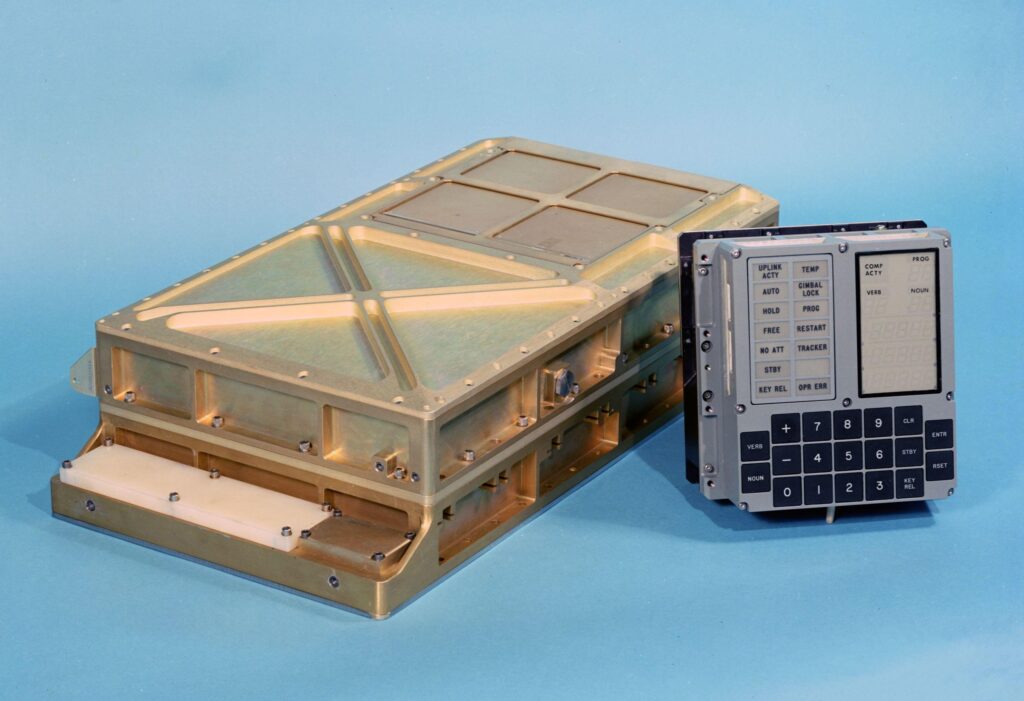
Notably, it was one of the first computers to use integrated circuits, a milestone it shares with the IBM 360 3https://www.guinnessworldrecords.com/world-records/first-computer-to-use-integrated-circuits#:~:text=In%201964%2C%20the%20IBM%20360,computer%20to%20use%20integrated%20circuits. and the SDS 92 4https://historyofcomputercommunications.info/section/2.20/the-integrated-circuit-1959/#fn86. Another reason for the reduction in size was its wired core memory, which was hand-woven in a tedious process that took eight weeks. It had 2,048 words of RAM and 36,864 of ROM. 5https://www.righto.com/2019/07/software-woven-into-wire-core-rope-and.html
Manchester Ferranti
The UNIVAC is often referenced as the first commercial computer, but it was the Manchester Ferranti, also known as the Mark I, that beat it by a month, in February 1951. There were two earlier machines, BINAC and Z4, that could be considered predecessors, but BINAC was electromechanical and not general-purpose, and the Z4 never worked well after installation. 6https://web.archive.org/web/20080804005753/http://www.palosverdes.com/lasthurrah/binac-description.html
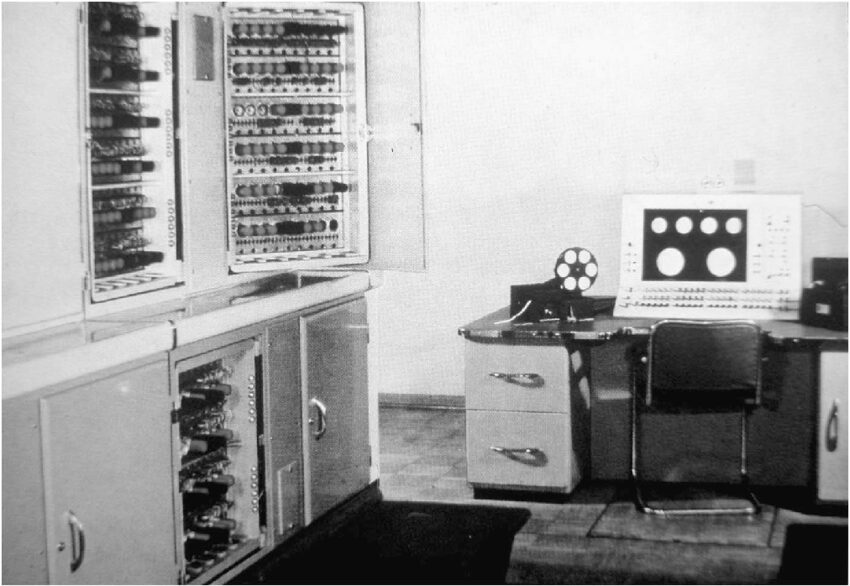
The Ferranti was also the first computer in the world with sound, as it included an instruction to alert the operator with variable time and frequency. In 1951, the BBC even recorded several melodies played by this computer. 7https://curation.cs.manchester.ac.uk/digital60/www.digital60.org/anniversary/digital_music.html Another very interesting achievement was being one of the first computers to have a chess game, albeit a very limited one. It was also programmed with a checkers game in 1952. This unique achievement is shared with machines like the NIMROD, about a year earlier. However, this machine only ran the nim game.
PDP
The PDP machines from Digital Equipment Corporation were pioneers in many ways. The first model, the PDP-1, was launched in 1959 and became one of the most iconic symbols of hacker culture. It was also the hardware used for one of the great milestones in video games, Spacewar!, in 1962. It was the first time a video game ran on a minicomputer.

Indeed, the term minicomputer sounds like a joke, as these were devices that occupied several cabinets. However, the name comes not from their size but from their minimal nature. They were also smaller and cheaper than mainframes, not competing with large systems like IBM. They emerged after the transistor and magnetic core memory revolution, and the honor of being the first of their kind is debated among other minis like the LINC, from the same company, or the TXs from Lincoln Laboratory.
The PDP-8 model, released in 1965, was the first computer to cost less than $20,000, was the size of a refrigerator, and sold around 50,000 units—a huge number for that time. Among the many operating systems developed, the 8OS is cited as pioneering the use of the command line as input. It inspired the CP/M operating system in the 1970s, which in turn directly inspired MS-DOS and similar systems, which made a splash in IBM PC architecture. 8https://liam-on-linux.livejournal.com/81341.html
Talking about the PDPs means talking about UNIX, as this operating system was initially designed for the PDP-7 by Ken Thompson and Dennis Ritchie in 1969. Not happy with just that, after writing it in assembly language, Dennis Ritchie invented the ubiquitous C language a couple of years later. Virtually all modern computers derive from the technologies developed for these minis, whether UNIX, C, or the command line, among others.
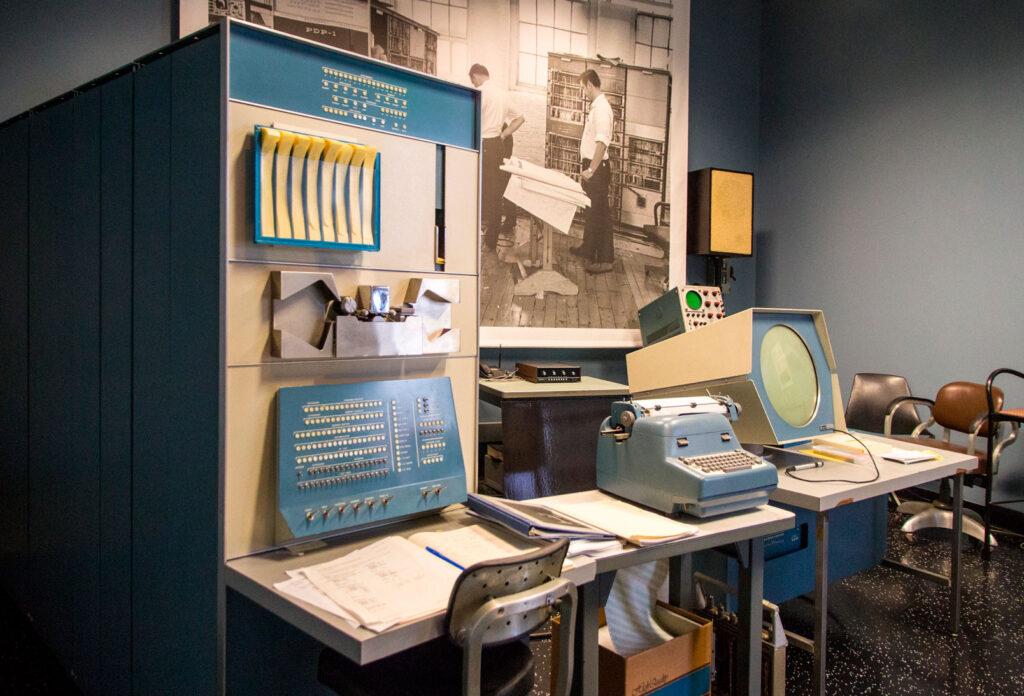
Another significant step forward came with the PDP-11, which was the first to be built with UniBus in 1969. This allowed all the computer’s devices to communicate with each other, including memory, enabling Direct Memory Access (DMA) and freeing the central processor for other tasks during operations. It also facilitated data exchange and the development of device drivers.
Xerox Alto
The milestones of this Xerox PARC computer from 1973 were many. Although it was not the first personal computer in history (that honor goes to the Kenbak-1), it was much closer to modern computers than any other gadget created at that time. Certainly, if we need to find a direct predecessor to the philosophy of personal computer interfaces today, we find it in this computer.
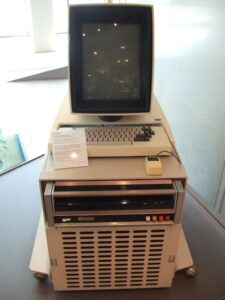
Its innovations were substantial: it was the first computer with a graphical interface, the first to have a mouse, the first to use the WYSIWYG philosophy9What you see is what you get, the ability to run multiple applications simultaneously, and the first to use the desktop metaphor. It was also the first computer with Ethernet. Hats off.
Steve Jobs‘ famous visit to Xerox PARC in 1979 ignited the spark for graphical user interfaces in personal computers. Apple Computers’ Lisa and Microsoft Windows were the fruits of this “inspiration.” They might not have gotten it right the first time, but it eventually became the main interface for modern user computing.
It cost $32,000 and was not a commercial success, so it is not as well-known as other Apple or IBM computers; however, it is probably the greatest influence on today’s personal computers. Its size, being that of a small filing cabinet, didn’t help either.
Altair 8800
Sometimes being the first isn’t everything. While the Kenbak-1 was first, and the Xerox Alto was a reference, it was the MITS Altair 8800 that sparked the home computing era in 1977 with the revolution of the Intel 8080 processor. This was the first microprocessor cited as having real commercial usefulness for general-purpose computers, beyond embedded applications like calculators. Bear in mind that this processor was the “inspiration” for others like the Zilog Z80.
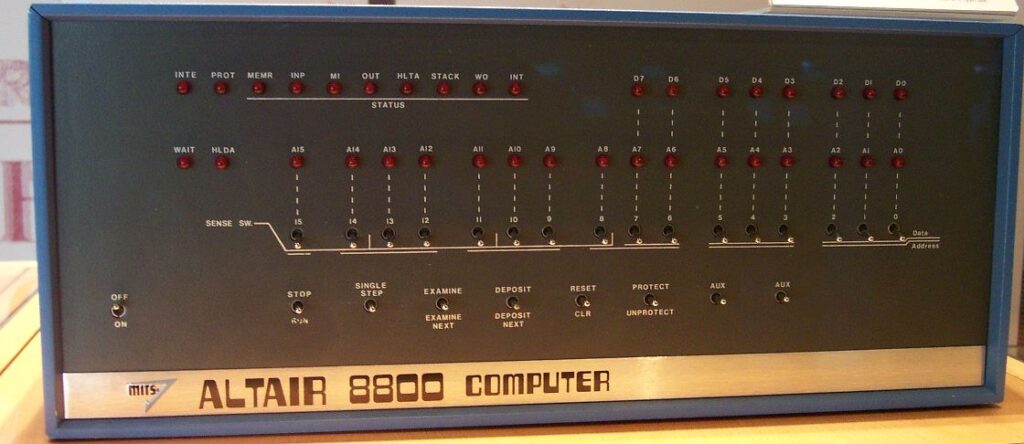
Much of its success is due to being featured on the cover of Popular Electronics in January 1975 and being sold as a kit to assemble. Also, the first available programming language was Altair BASIC, developed by two individuals named Bill Gates and Paul Allen, who after this event founded a little company known as Microsoft. This computer was the first de facto standard in personal computers, with its bus later known as the S-100. Since a single motherboard would have been too large, a backplane design was chosen, where cards were inserted in parallel into the bus, a design that became an IEEE standard.
A clone of this computer, the IMSAI 8080, included a keyboard and monitor, which were optional with the Altair. It was the computer used by the protagonist in the film WarGames (John Badham, 1983).
Others
The reader would not forgive me for not mentioning the following devices.
- IBM 5150 – Not the first personal computer, but the first IBM PC in history, in 1981. The vast majority of personal computers still use this old architecture. Not bad, right?
- IBM S/360 – The true commercial mainframe from 1964. Its architecture still echoes in IBM’s current Z series and was among the first computers to use integrated circuits. A major market success. It was also one of the first machines to be emulated in later mainframes of the brand.
- TRS-80, Apple II, Commodore PET – The 1977 triad. These three computers were responsible for popularizing computing, at least in the United States, where the economy allowed it. They were introduced into schools, home computers began to emerge, and true competition in personal computing started.
- Commodore 64 – Although this title is contested, since 1982 it has been the best-selling computer model of all time. None of its successors matched the overwhelming success of the C64, not even the Amiga line with its outstanding multimedia capabilities.
- NeXT Cube – Steve Jobs’ parallel project to Apple, launched in 1988. It was where the WWW was invented, as well as the PostScript standard. Packed with features and with a rather high price, it is now a highly sought-after item. Its operating system was the basis for modern Mac OS (then OS X).
- IBM 5100 – Considered the precursor to the IBM PC, in 1975. Personal, portable, and considered a pocket mainframe due to its emulation capabilities. It is also sought after by time travelers. 🙂
- Cray I – The original supercomputer concept from 1976. Its vector central processing unit earned it many accolades from the industry and was one of the first computers with a very attractive design. At a price of $5 to $8 million, it was not for everyone.
Final Words
What do you think of the list? I tried to keep it brief and focus more on innovation than mere commercial success, but in the end, the first to sell often gets (or tends to get) the credit. Do you miss any computers or interesting facts? Let me know in the comments.
Referencias
- 1
- 2
- 3
- 4
- 5
- 6
- 7
- 8
- 9What you see is what you get

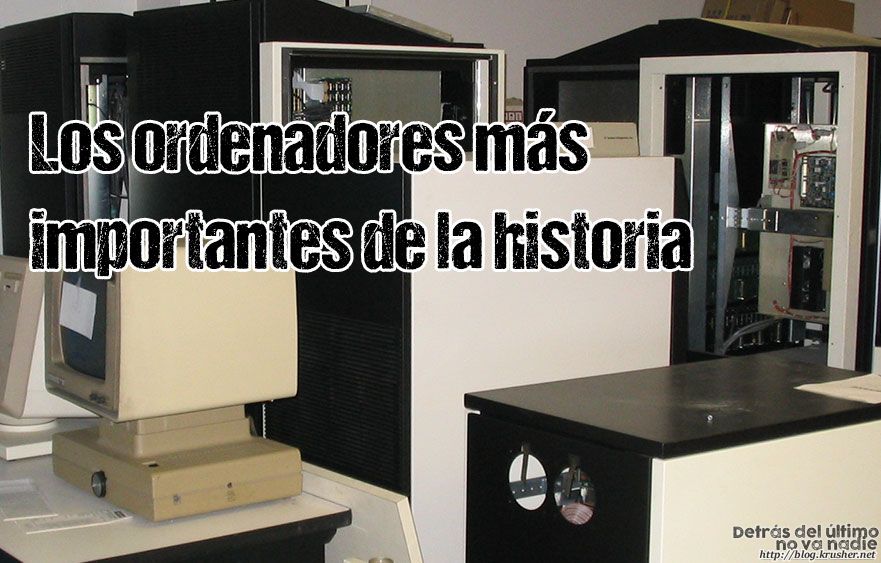
Please note this article was partially translated by an AI, so your mileage may vary. Feel free to notify errors or weird translations.